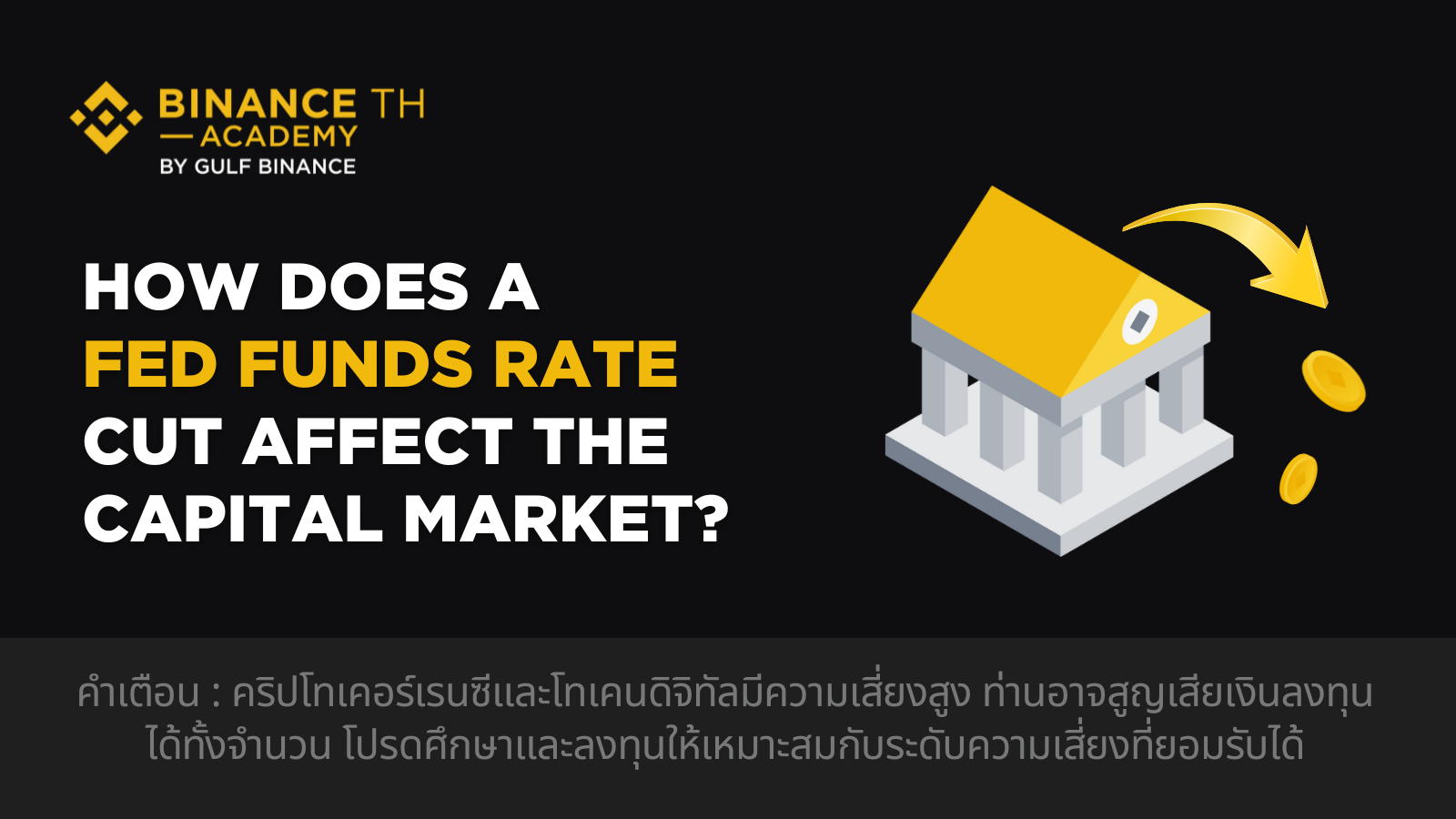How Does a Fed Funds Rate Cut Affect the Capital Market?

Speculation has been rising that the U.S. Federal Reserve may move toward cutting interest rates. In remarks last week, the FED suggested that “the balance of risks has shifted, and we may need to adjust our stance.” This marked a shift from its earlier firm commitment to bringing inflation back down to 2%. With growing concerns about the economy, the FED now appears more focused on addressing these risks, a signal that rate cuts may be on the horizon. Let’s take a closer look at how rate cuts affect the market and what history can tell us.
What is the Fed Funds Rate (FFR)?
The FFR, often referred to as the policy interest rate, is the benchmark rate set by the Federal Reserve. It serves as a guideline for commercial banks when determining lending and deposit rates for consumers and businesses.
Impact of Interest Rate Changes
Raising Interest Rates
Commercial banks face higher borrowing costs from the Fed lending becomes more difficult, loan interest rates rise businesses and households may delay borrowing.
Spending decreases while savings increase due to higher deposit interest rates.
The main objective is to control inflation.
Lowering Interest Rates
Commercial banks face lower borrowing costs from the Fed lending becomes easier, loan interest rates fall and the private sector can borrow and invest more easily.
Households increase spending as deposit interest rates decline.
The main objective is to stimulate the economy.
Lower Interest Rates & Liquidity
Lowering the FFR not only makes borrowing easier but also increases liquidity in the financial system. Newly issued government bonds offer lower interest rates. Investors compete to buy older bonds with higher rates. Bond prices rise, bond yields decrease. With lower yields, investors tend to shift funds into riskier assets rather than holding government bonds.
The United States, as the world’s largest economy, a major global buyer, and with the largest capital markets, and the dollar serving as a reserve currency for many countries, means that changes in U.S. monetary policy affect assets worldwide, attracting global investor attention.
Historical Market Performance After Rate Cuts
Research by Evercore ISI found that during non-recessionary periods, the S&P 500 rose by an average of 14% within six months of a Fed rate cut. However, during recessions, the S&P 500 actually fell by an average of 4% in the same period.
Here are some historical examples of S&P 500 returns six months after a rate cut:
2019/07: +13.3%
2007/09: -11.8%
2001/01: -12.4%
1998/09: +26.5%
1995/07: +8.0%
1989/06: +7.5%
1987/11: +1.7%
1984/09: +7.2%
There are generally two scenarios following a rate cut
Too Late (2001, 2007) The economy was already weakening. Even with rate cuts, the U.S. entered a recession. Equity markets fell sharply six months later.
Well-Timed (1987, 1995, 1998) The Fed cut rates early enough. The economy avoided recession (a “soft landing”). Equity markets surged afterward.
What About This Time?
In theory, rate cuts tend to boost risk assets because lower borrowing costs encourage investment and spending. However, if cuts come too late, when the economy is already sliding into recession, investor confidence may collapse, delaying recovery until rates fall much further or liquidity injections return to the system.
So the key question today is: Will this rate cut mark a soft landing or a recession?
If the U.S. avoids recession, markets may rebound strongly, just as history suggests. But if the economy is already too weak, rate cuts may not be enough and risk assets could struggle before recovery eventually returns.
